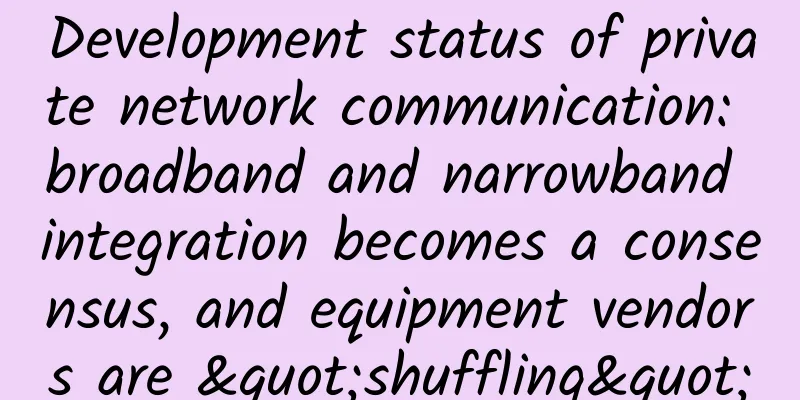Analysis: Advantages and limitations of wireless data centers

|
For data center operators, the idea of a wireless data center sounds like a dream. Eliminating the physical network cables that typically connect servers can greatly simplify the setup and management of data center equipment. In addition, wireless networking technology continues to advance, with today's wireless networks able to transmit more data over longer distances than ever before, making the idea of a wireless data center increasingly attractive. Unfortunately, this doesn’t mean that most data center operators will abandon physical network cables anytime soon. Despite real use cases for data center wireless networks, and despite advances in wireless technology, they are still limited. What is a Wireless Data Center?A wireless data center is one that provides connectivity between servers via wireless networks rather than physical cables. In other words, a wireless data center uses the same type of wireless connection that most consumers use in their homes, connecting devices to a wireless router. It’s worth noting that people think that wireless data centers may not be able to completely get rid of wired network cables. Unless you install a wireless network interface in every server and other device that needs to connect, you may still need to run Ethernet cables within the server racks, but, for example, you may have a wireless router in each rack to achieve wireless connectivity between server racks, and then distribute data packets within the racks via Ethernet. We should also note that wireless data centers are still wired for power. While wireless power is a thing, the technology is not yet advanced enough to be practical in data centers, where ultra-reliable, high-capacity power is critical. Advantages of Wireless Data CentersSo far, few data centers have deployed wireless networks. The trend of data center networks is still closely related to physical cables. But by switching to a wireless approach, data center operators may gain important benefits:
In short, wireless data centers offer a more convenient and flexible approach to networking at a lower price. Challenges of Data Center Wireless NetworksOn the other hand, wireless data centers are also subject to some important limitations: (1) Network throughput One of the biggest limitations is that wireless networks have lower bandwidth capacity than most wired networks. The latest wireless standard, 802.11ax, supports maximum speeds of less than 10 Gbps, a fraction of the hundreds of gigabits per second that wired Ethernet can transfer. For data centers that require high network throughput, wireless networks are not fast enough. (2) Security Modern wireless network security has come a long way from the days when most networks were either unencrypted or relied on easily cracked encryption algorithms such as WEP. But the bottom line is that wireless networks are less secure than wired networks because anyone in the physical vicinity of a wireless router can intercept and potentially decode packets flowing through a wireless network, which is more difficult to do with a wired network because you need access to the line to sniff the packets, encountering the security controls of the physical data center in the process. Beyond that, someone who wants to disrupt data center operations could do so by jamming the wireless network, a type of denial of service attack that wireless data centers are vulnerable to. (3) Network interference and performance issues Even if no one is intentionally interfering with wireless networks, wireless data centers can experience poor connectivity due to interference between networks using the same frequencies. In general, packet loss, poor latency, and other performance issues tend to be higher when using wireless networks, which are not as reliable as wired connections. So when does a wireless data center make sense?The challenges above do not mean that a wireless data center is impossible. In the right circumstances, a wireless approach may make sense, at least for certain data center equipment. For example, if you need to connect servers that are located far from each other on a data center floor, and the workloads running on those servers do not require particularly high network throughput or reliability, setting up wireless links between those servers may be simpler and more cost-effective than laying cables. Likewise, wireless networks can provide good connectivity for surveillance systems and other ancillary equipment that helps power a data center, which generally don’t require much bandwidth and can tolerate the occasional lost packet or connection. in conclusionHowever, wireless networking may not be a practical solution for the large number of servers in a large-scale data center. This may change over time if wireless technology continues to improve (although wireless technology with sufficient performance to meet the needs of most data centers has not yet emerged). As a result, most data center operators can’t expect to ditch network cables anytime soon, but at least in some cases they may be able to simplify network management by leveraging wireless connectivity where it makes sense. |
<<: Learn about FTP/FTPS/SFTP file transfer protocols in one article
>>: What are the pros and cons of 5G?
Recommend
iWebFusion dedicated server starts from $49/month, 4-40 core CPU, 384G memory, NVMe hard disk, 1-10G bandwidth, multiple computer rooms in Los Angeles and other places
iWebFusion (formerly iWFHosting) is a hosting com...
"If you don't believe it, run a test?" Is it a gimmick or real strength?
1. Background: The Battle of Performance "If...
Wu Hequan, Academician of the Chinese Academy of Engineering: IPv6 will become the carrier platform of the new generation of IT and will develop in parallel with computing power network
[[432879]] The 2021 China Mobile Global Partner C...
The three major operators' Q1 2021 financial reports: revenue and profits both increased, and 5G drove performance back to prosperity
“Plant trees in spring and harvest fruits in autu...
DogYun customized classic cloud, Hong Kong VPS annual payment 168 yuan
DogYun is a Chinese hosting company founded in 20...
Operators are satisfied with 4G, what can they do after 5G is commercialized?
In the early stage of 4G development, the dividen...
Illustrated TCP three-way handshake: building a network session step by step
In Internet communications, ensuring the reliabil...
Let’s talk seriously about what is a fiber optic terminal box?
When it comes to network cabling, outdoor connect...
Research on 4G network coverage quality assessment method in rural areas
Labs Guide The analysis of 4G coverage quality in...
Worth learning! 10 good habits of network administrators
【51CTO.com Quick Translation】I have been a comic ...
This move can save tens of billions of yuan in 5G construction!
Recently, two major European operators, Vodafone ...
Wenku: Improve the IPv6 standard system and develop key standards
On October 11, the 2021 China IPv6 Innovation and...
CloudCone: Los Angeles CN2 GIA line server 15-100M unlimited traffic starting from $82/month
I have shared information about CloudCone many ti...
A quick overview of 5G industry developments in May 2021
After the rapid development in 2020, 2021 is a cr...
Saving Energy in Smart Buildings with PoE Switches
This is not something that happened overnight, bu...









